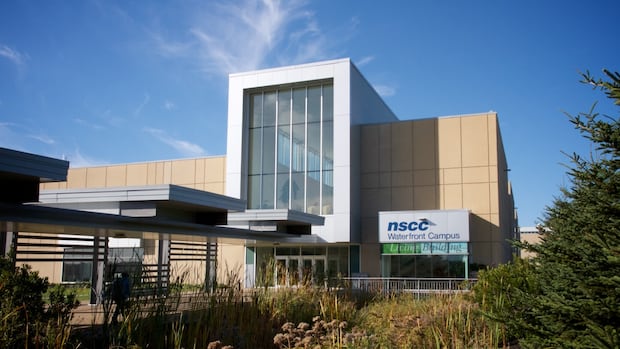Dalhousie campus to remain closed until Wednesday following protest end

Dalhousie University remained closed Tuesday following the dismantling of a pro-Palestinian protest camp the day before, but the school has not offered details of why students and staff are still being told to stay off its Halifax campuses until Wednesday.
In a statement, the university’s president and vice-provost said protesters who occupied Dalhousie’s Kenneth C. Rowe Management Building on Monday afternoon for more than an hour “sought out, harassed, and intimidated” people working and studying there.
Protesters had moved to the lobby of the building, bringing tents and waving flags, after abandoning their two-month-old encampment site at Dalhousie’s Studley Quad green space, which was surrounded early Monday morning by security guards enforcing a trespass notice.
Halifax police arrived at the Rowe building and protesters left soon after. Dalhousie issued an alert shortly after 4:30 p.m. closing all Halifax campuses “immediately,” and on Tuesday said the university will only reopen Wednesday.
Ajay Parasram, an associate professor at Dalhousie who went to the Rowe building and observed the protest, said he did not witness any intimidation or harassment, although he noted people can feel differently about similar experiences.
He said he worried the university, by closing the campus, has created a “manufactured sense of risk” and a “false narrative that the student encampment posed a threat.”
“There was no threat as far as any of us who had been around all day could see. There was no threat over the three months of the student encampment,” he said. “When everybody was leaving, it was just a bunch of very tired students with blankets.”
The group Students for the Liberation of Palestine Kjipuktuk, which was behind the encampment, wants Dalhousie to cease all partnerships with Israeli academic institutions and suspend financial ties with the country.
The social media account of Free Palestine Halifax-NS suggested protesters headed to the Rowe building because it houses the office for an Israel exchange program.
The encampment is among many that emerged on university campuses in North America to protest Israel’s military offensive in Gaza, which followed the Oct. 7 Hamas attack.

Dalhousie University has declined interview requests over the last two days. A statement Tuesday from president Kim Brooks and vice-provost Rick Ezekiel outlined the events the university said precipitated the closure.
Those include the decision by protesters to hold a news conference a week ago in the Henry Hicks administration building, which is adjacent to the Studley Quad.
The statement said several brought sleeping bags and intended to occupy the building, which made some people who worked there afraid to leave their offices. Police arrived and the protesters left.
The university issued a trespass notice on Friday that said protesters were required to leave the Studley Quad by Sunday evening.
Demonstrators remained and at one point on Monday created a wall of wooden pallets on the steps of the Henry Hicks building, blocking the main entrance, although people could still come and go using other doors.
“Dalhousie is a space of learning and a workplace where people should not be subjected to experiences that leave them feeling physically and psychologically unsafe,” the Dalhousie statement said.



